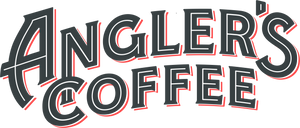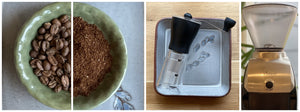Seed to Cup - Grinding
In our last installment of Seed to Cup, we discussed coffee freshness and how to store beans to slow the staling process. That’s the perfect lead-in to discussing grinding coffee beans, because grinding is one of the biggest accelerants of staling. Remember that light and oxygen negatively affect roasted beans, and grinding exposes more surface area to those elements.
So, here’s what we recommend:
- Buy our whole beans and grind only the amount you need, right before you brew.

- If whole beans don’t make sense, we offer pre-ground coffee in carefully sealed bags. (We get it—if you’re heading to the lake or the river for a fishing trip, you may not want to carry a grinder.)

Now, one final point: different brewing methods do best with different grinds. We offer pre-ground beans for Drip machines and pour overs (medium to medium-fine grind); French Press brewers (coarse); AeroPress brewers (fine), which also works for reusable pods for Keurig machines.
If you’re grinding your own beans, be open to practice and experimentation. A higher-quality burr grinder will usually have settings to help you hit coarse, medium, and fine grinds, and everything in between, but no two burr grinders are the same. In other words, a setting of 5 on one will not produce exactly the same grind as it does on another.

Spin or blade grinders require even more play as you learn how long to depress the grind button and how many beans you can grind at one time. These grinders will not give you the same precision and repeatability of a good burr grinder.
You’ll want to get to know your grinder, no matter which one you buy. But that doesn’t mean you have to buy without expert guidance. Grinders range in price, quality, function, and complexity—and we’re happy to help you choose where to start. Email support@anglerscoffee.com with your favorite brew method, and we’ll offer our suggestions on a grinder!
Tight Lines!


